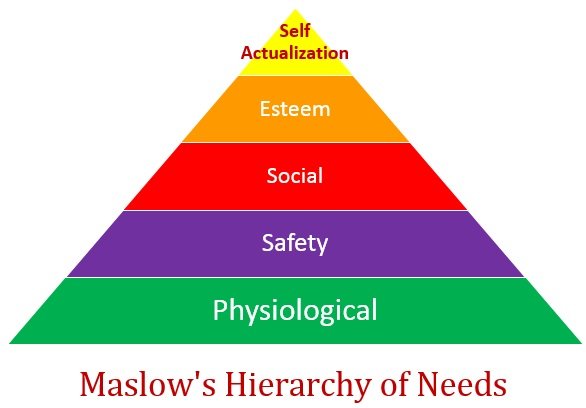WHAT MOTIVATES ANYONE TO BUY ANYTHING?
The alphabet soup used to define selling models are not effective on their own.
· MAN (money, authority, need – thought to be politically incorrect many years ago)
· BANT (budget, authority, need, timeframe – if you disqualify based on indefinite budget and timeframe you are missing the best deals)
· ANUM (authority, need, urgency, money – better than BANT but still missing the boat to disqualify due to “money”)
· And the newest one seen everywhere is MEDDPICC (metrics, economic buyer, decision criteria, decision process, paper process, identify pain, champion, competition – makes me dizzy)
Forecasting is historically inaccurate and not much has changed despite all the technology available. Most formulas ignore important inputs that are effective in the accuracy of your forecasts.
Here are three human factors to consider:
There are three conditions of need that cause anyone to buy anything – from getting your oil changed over a lunch break (driven by an ad on the radio during morning drive time), to multimillion dollar purchases of equipment, technology or services. The three conditions are:
Fear of loss in your current situation
Perceived risk of deterioration in your current situation
Opportunity to improve your current situation
The easiest condition to sell into is fear of loss. A good example of fear of loss is when compliance laws are enacted, and your company is not compliant. The fear of loss could be in the form of fines, the inability to run your business until you are compliant, or immediate competitive threats by those that have already complied.
At any given time, only a small percentage of companies are in a fear of loss condition. It is the easiest condition to sell into but there are two few of them to make a living.
The second easiest condition to sell into is perceived risk. Some people have a tough time understanding the difference between fear of loss and perceived risk. Think about it this way. Fear of loss means that something is happening that threatens your existence. Perceived risk occurs when everything is fine right now, but there are factors in motion that are going to change your situation and you better make plans to defend your position.
A good example of this is that many big box retailers are in a fear of loss condition, due to online competition. Some will not make it. As little as five years ago, the big box stores should have considered themselves in a perceived risk condition and started earlier on the path to e-commerce.
The hardest condition to sell into is opportunity to improve. I call this selling into the rainbow. There are no basic needs or psychological needs (which are needs based on Maslow’s hierarchy) to be satisfied by buying an opportunity to improve.
It takes an individual who has reached the highest level—self-actualization—to take the risk to invest in a product or solution that only promises an opportunity to improve the current situation. An example of this is making a purchase simply because it is the right thing to do (such as converting a fleet to electric vehicles to satisfy the need to be green regardless of the pay off or lack thereof).
Buyers also buy for reasons having to do with the company they work for and for reasons related to them as an individual.
Reasons why people buy for their company that are based on company goals:
SAVE MONEY
SAVE TIME
IMPROVE A PRODUCT OR SERVICE
SAVE LIVES
The four benefits above are what I call the ultimate benefits. Ultimate benefits resonate with your prospects or customers’ professional desires. However, when marketing or selling, you cannot simply lead with the ultimate benefit.
There is a string of benefits paid off by the ultimate benefit. Example: The current version of this SUV weighs less than last year’s model. Thus, you get more miles to the gallon. With more miles to the gallon, you save money.
People also buy for their company because they have personal goals:
COMPENSATION
SECURITY
RECOGNITION
SELF-ACTUALIZATION (WANT TO DO THE RIGHT THING EVEN IF IT DOES NOT AFFECT THEM IN THE LOWER LEVELS OF MASLOW’S HIERARCHY)
When evaluating your chance of winning a deal, evaluate the following:
Is the right condition of need
…supported by a valid reason to buy on behalf of the company?
…supported by the personal reason a purchase is considered?
Finally, the forgotten steps in the sales process
Let me overcome the first objection. Many of you are rolling your eyes and faulting me for using the phrase “the sales process” rather than the uber-popular phrase “the buying process.” Get over it. Do not believe that buyers take themselves 67%, 80% or even 95% of the way through the sales (or buying) process on their own. It is a myth. Doubt that. Reach out to me for proof.
Regardless of the sales methodology that you use, it can be more effective by recognizing that there are five steps in the sales process:
1. Find a pain or need
2. Get agreement that there is pain or need
3. Get agreement to do something about the pain or need
4. Agree on a generic solution
5. Agree on a customized, specific solution (yours) if that is appropriate
The problem is that marketing typically starts on step 1 and sales typically starts and stops on step 5. Steps 2, 3 and 4 are critically important but mostly ignored. You can hear it, right? The prospect verbalizes a pain or need and sales jumps to step 5. Subconsciously, the buyer might physically still be in the meeting or on the call, but they have lost all interest in your product or service if you skip steps 2 – 4.
Put your forecast process through four extra steps during your next review. What is the condition of need? Why would the buyer buy on behalf of the company? Why would they buy for personal goals. Finally, what stage are they in the sales cycle and can you go back through the ones you skipped between step 1 and step 5?
Reach out to me for discussion, clarification or other help. Dan.McDade@prospect-experience.com or 770-262-9021

